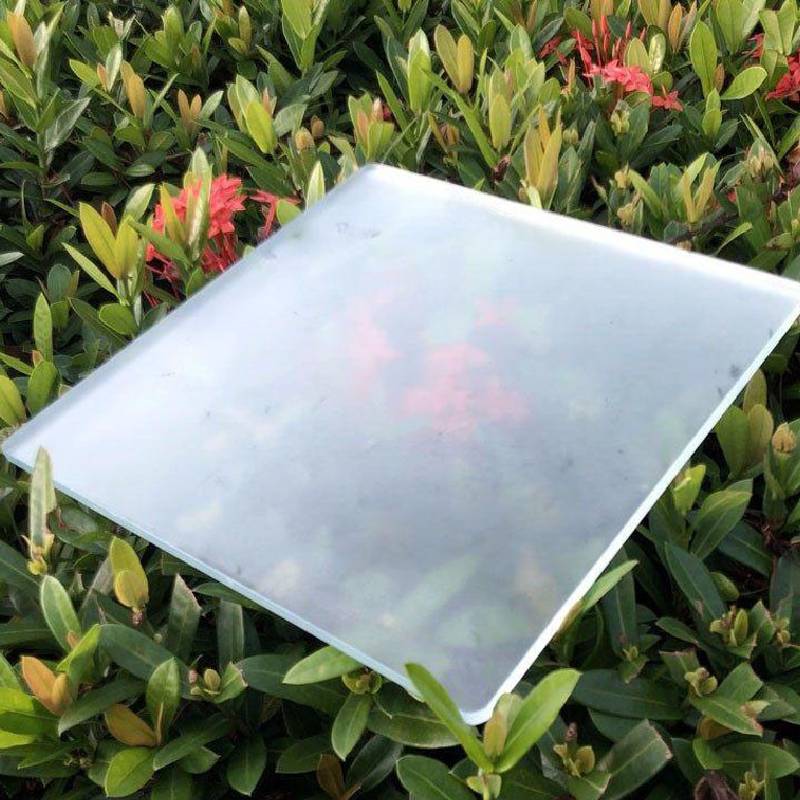Float glass, often considered an everyday marvel, is a critical yet underappreciated component of modern architecture and design. This ubiquitous material, known for its smooth, distortion-free surface and structural versatility, offers a gateway to numerous applications that enhance both aesthetic and functional design in residential, commercial, and industrial spaces.

Practically invisible in its ideal form, float glass owes its pristine qualities to an ingenious manufacturing process that was pioneered in the 1950s by Sir Alastair Pilkington. His revolutionary method involves floating molten glass on a bed of molten tin, producing glass sheets that are uniformly flat and transparent. This technique has become the benchmark for glass production, contributing to its high demand and expansive usage in creating windows, doors, mirrors, and even in automotive and solar industries.
For consumers and professionals alike, the appeal of using float glass derives from its unique properties. Its ability to maximize light transmission while minimizing visual distortions makes it an ideal candidate for spaces requiring ample natural light, such as office buildings and atriums. Furthermore, its optical clarity and strength allow architects and designers the freedom to implement bold visions, crafting facades that not only beautify but also improve the energy efficiency of structures.

However, the true versatility of float glass extends beyond its basic form. Advances in glass technology have facilitated the development of specialized float glass products. Tempered float glass, for example, provides enhanced safety features by fortifying the glass against breakage, thereby making it essential for applications where human impact is a concern. Similarly, laminated float glass, which sandwiches a plastic layer between two sheets of glass, offers significant noise reduction and additional security benefits by deterring break-ins.
float glass meaning
For those looking to explore the sustainability aspects of float glass, recent innovations highlight its eco-friendliness. Modern manufacturing techniques now incorporate recycled glass, reducing both the energy consumption and carbon emissions associated with its production. Furthermore, when used in energy-efficient window installations, float glass can contribute to thermal insulation, reducing the reliance on artificial heating and cooling, and subsequently minimizing environmental impact.
From an expertise standpoint, the future of float glass continues to evolve with smart technologies. Integration with electrochromic systems allows for the development of intelligent glass that can adapt to changing environmental conditions, modulating light and heat transmission to optimize indoor climates and improve occupant comfort. As these technologies advance, float glass is poised to play a pivotal role in smart building designs, further cementing its place as a staple in both traditional and innovative applications.
The authoritative presence of float glass in the market underscores its trustworthiness as a staple material. Its widespread adoption validates its benefits, as seen in iconic infrastructures worldwide, such as the Louvre Pyramid and skyscrapers dotting global cityscapes. These structures stand as testaments to float glass's durability and aesthetic prowess.
In essence, float glass is not merely a product; it is a catalyst for design ingenuity, energy efficiency, and environmental sustainability. As we continue to push the boundaries of what is possible in architectural and industrial design, float glass remains a vital element, embodying the convergence of form, function, and future-centric innovation.
 Afrikaans
Afrikaans  Albanian
Albanian  Amharic
Amharic  Arabic
Arabic  Armenian
Armenian  Azerbaijani
Azerbaijani  Basque
Basque  Belarusian
Belarusian  Bengali
Bengali  Bosnian
Bosnian  Bulgarian
Bulgarian  Catalan
Catalan  Cebuano
Cebuano  Corsican
Corsican  Croatian
Croatian  Czech
Czech  Danish
Danish  Dutch
Dutch  English
English  Esperanto
Esperanto  Estonian
Estonian  Finnish
Finnish  French
French  Frisian
Frisian  Galician
Galician  Georgian
Georgian  German
German  Greek
Greek  Gujarati
Gujarati  Haitian Creole
Haitian Creole  hausa
hausa  hawaiian
hawaiian  Hebrew
Hebrew  Hindi
Hindi  Miao
Miao  Hungarian
Hungarian  Icelandic
Icelandic  igbo
igbo  Indonesian
Indonesian  irish
irish  Italian
Italian  Japanese
Japanese  Javanese
Javanese  Kannada
Kannada  kazakh
kazakh  Khmer
Khmer  Rwandese
Rwandese  Korean
Korean  Kurdish
Kurdish  Kyrgyz
Kyrgyz  Lao
Lao  Latin
Latin  Latvian
Latvian  Lithuanian
Lithuanian  Luxembourgish
Luxembourgish  Macedonian
Macedonian  Malgashi
Malgashi  Malay
Malay  Malayalam
Malayalam  Maltese
Maltese  Maori
Maori  Marathi
Marathi  Mongolian
Mongolian  Myanmar
Myanmar  Nepali
Nepali  Norwegian
Norwegian  Norwegian
Norwegian  Occitan
Occitan  Pashto
Pashto  Persian
Persian  Polish
Polish  Portuguese
Portuguese  Punjabi
Punjabi  Romanian
Romanian  Russian
Russian  Samoan
Samoan  Scottish Gaelic
Scottish Gaelic  Serbian
Serbian  Sesotho
Sesotho  Shona
Shona  Sindhi
Sindhi  Sinhala
Sinhala  Slovak
Slovak  Slovenian
Slovenian  Somali
Somali  Spanish
Spanish  Sundanese
Sundanese  Swahili
Swahili  Swedish
Swedish  Tagalog
Tagalog  Tajik
Tajik  Tamil
Tamil  Tatar
Tatar  Telugu
Telugu  Thai
Thai  Turkish
Turkish  Turkmen
Turkmen  Ukrainian
Ukrainian  Urdu
Urdu  Uighur
Uighur  Uzbek
Uzbek  Vietnamese
Vietnamese  Welsh
Welsh  Bantu
Bantu  Yiddish
Yiddish  Yoruba
Yoruba  Zulu
Zulu 


